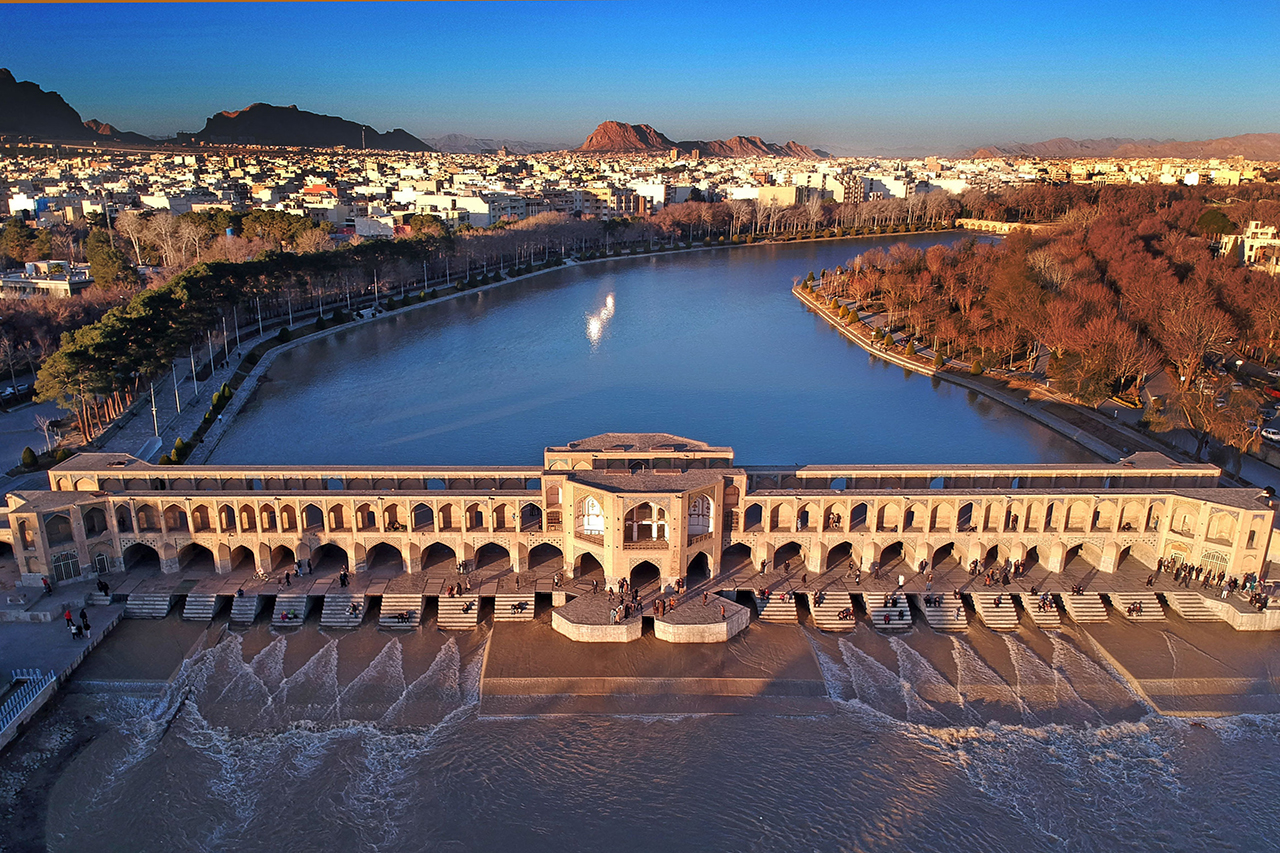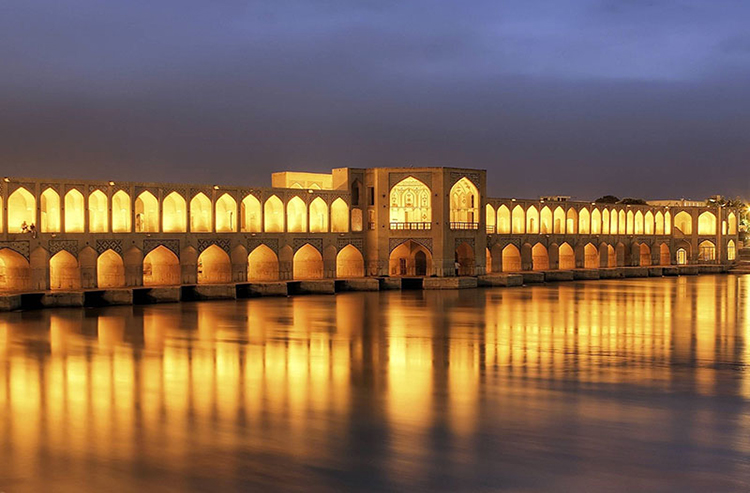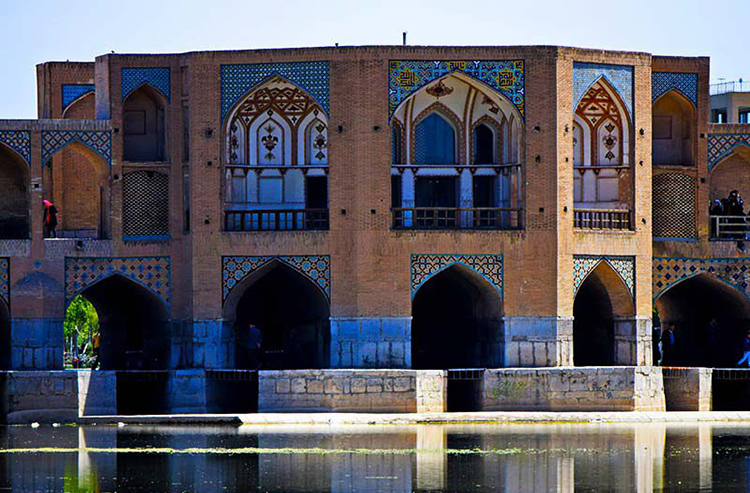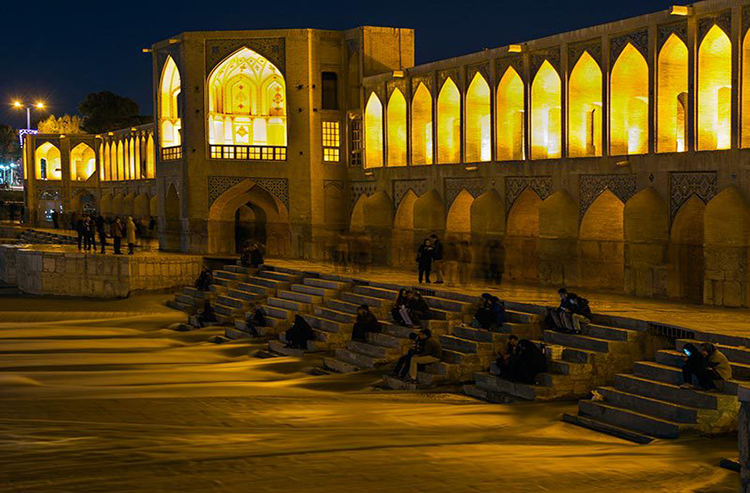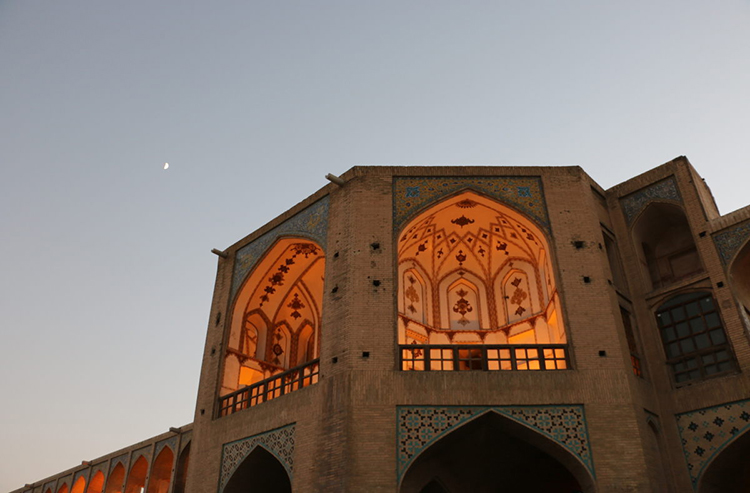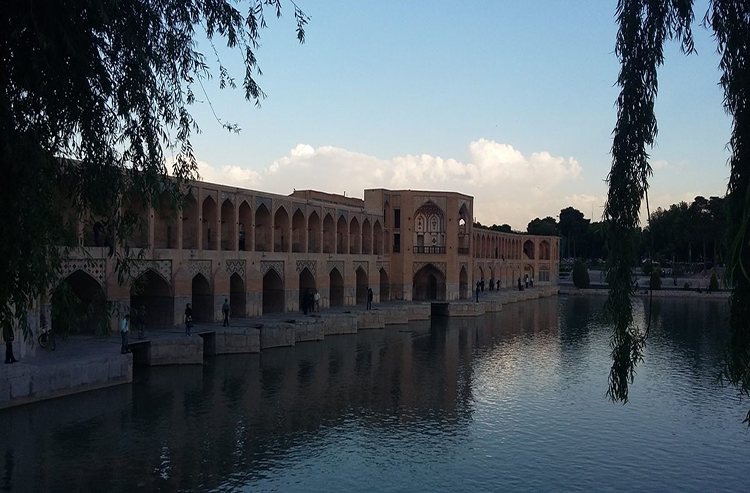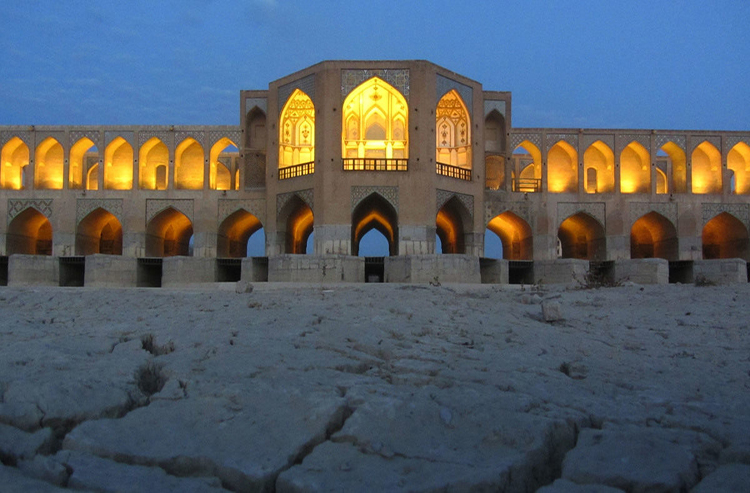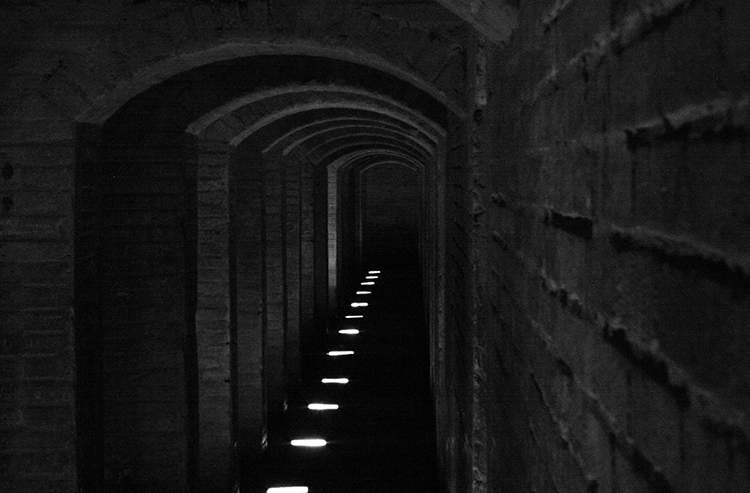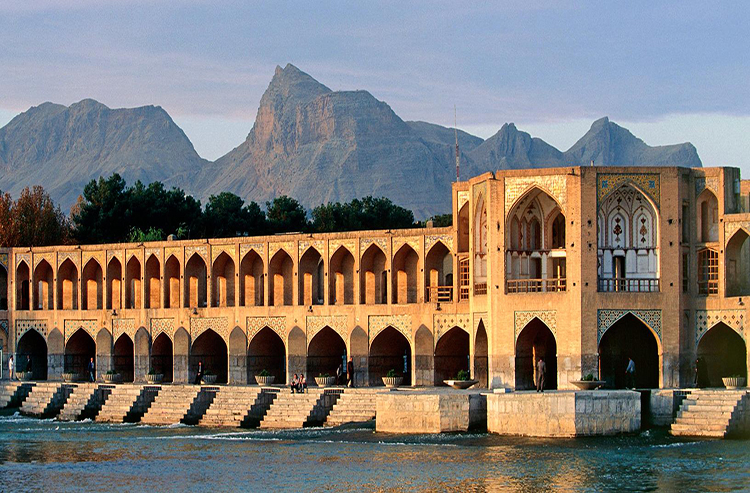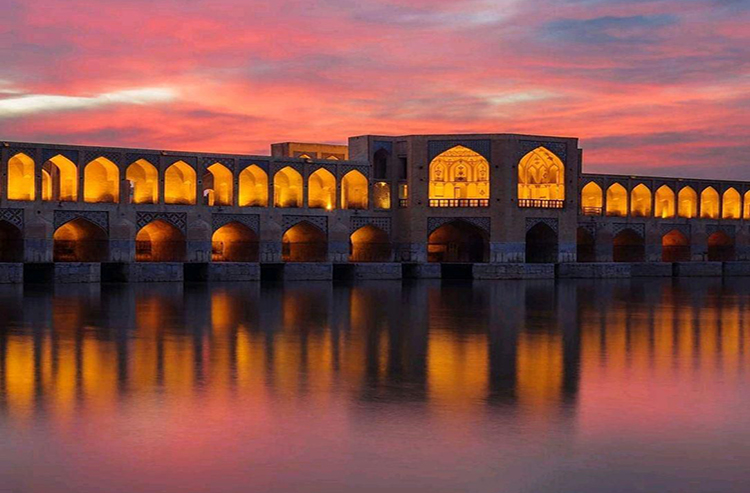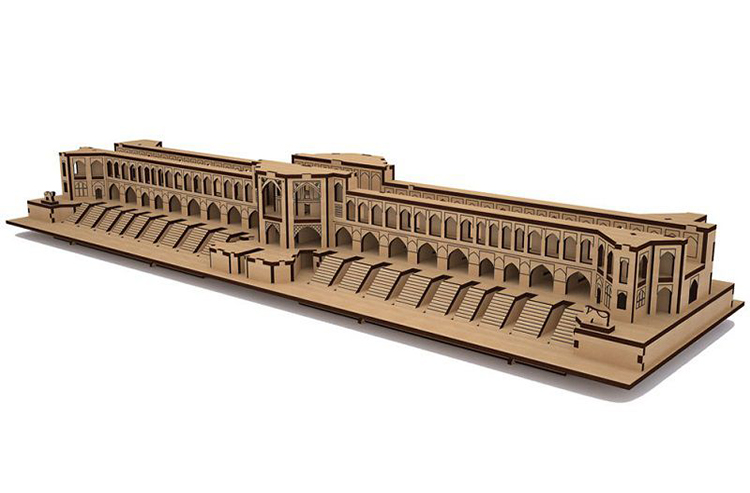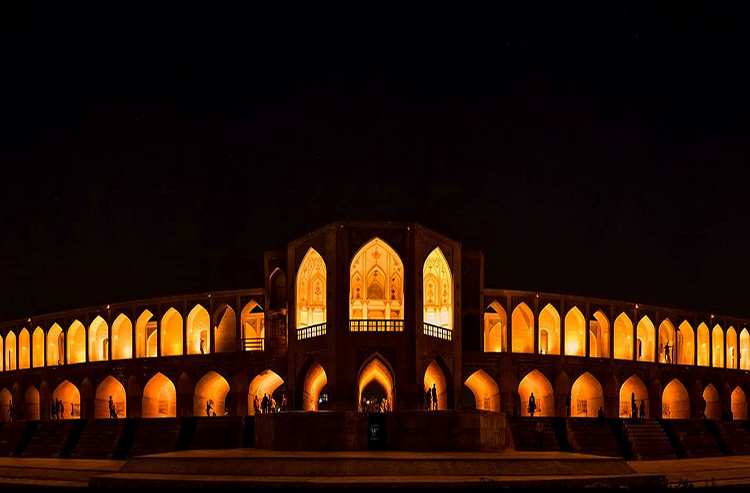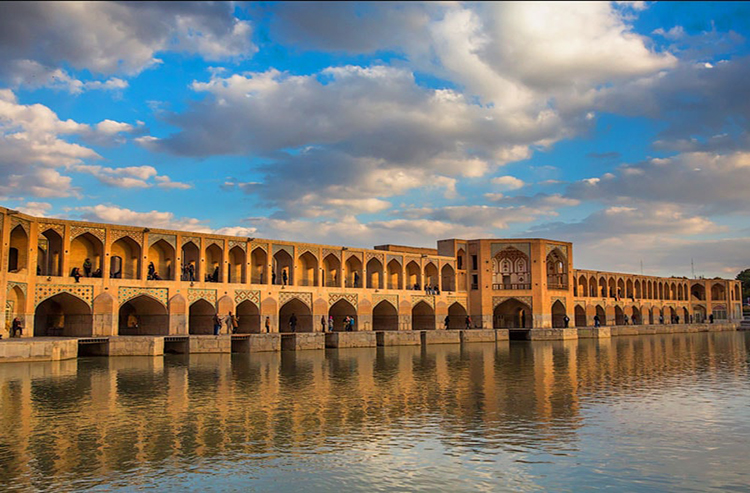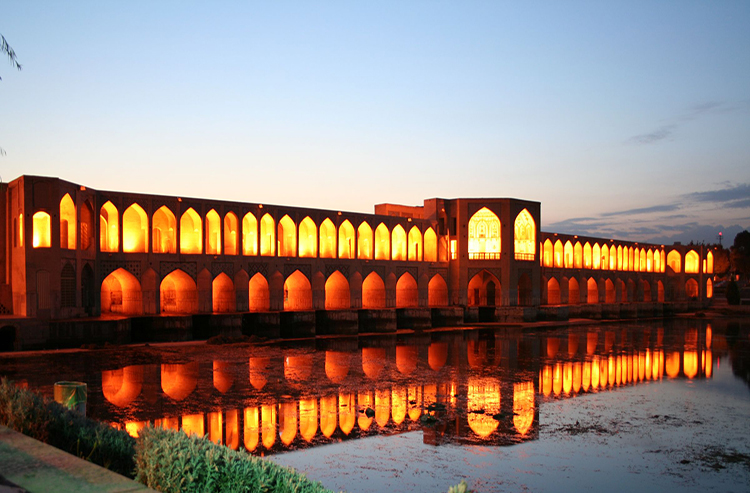Khaju Bridge
History
It’s easy to see why this centuries-old structure was deemed Isfahan’s finest bridge. During the day, sunlight bathes its tiled facade. After dusk, lights illuminate its arches, filling the caverns with a warm, fiery glow.
Zayandehrud River, starting in the Zagros Mountains, flows nearly 250 miles across the Iranian Plateau before ending in the Gavkhouni swamps. Humans have lived along its banks for thousands of years, with the earliest evidence of their settlements dating back to the sixth millennium. One of these settlements prospered and eventually became Isfahan.
Khaju is a name of small district in the neighborhood of bridge. As well as being a bridge and weir, this bridge functions as a building and a place for public meetings. It is decorated with paintings and tileworks. It is a thorough sample of Persian architecture. After 350 years of being constructed, the bridge is still working. It functions as a recreation center aiming at social interactions and cultural exchange.
It is about 132 meters long and 12 meters wide. The Khaju Bridge is made of two decks (floors). This bridge was built to work for different purposes. As a bridge connected the old Isfahan to villages located on the southern side and also connected Isfahan to Shiraz road. It was built as a wonderful recreational place.
The exact date of Khaju Bridge’s completion is not recorded, but it’s known that it was built in order of Shah Abbas II, the Persian Safavid King on top of an older bridge around 1650.
Architecture
It is one of the true examples of Persian architecture and shows the Safavid cultural influence in Iran. As Upham Pope puts it:
The culminating monument of Persian bridge architecture and one of the most interesting bridges extant…where the whole has rhythm and dignity and combines in the happiest consistency, utility, beauty, and recreation.
It has 23 arches with a length of 133 meters and width of 12 meters. The bridge passway is 7.5 meters wide and this two-storey bridge is made of bricks and stones. It is good to mention that it has 21 larger and 26 smaller inlet and outlet channels. Notably, the stone pieces used in the bridge are 2 meters long. They repaired the bridge in 1873.
There is a pavilion in the center of the structure that Shah Abbas (King Abbas) has once sat on and admired the view. Although, the only remnant of the king’s chair is a stone seat.
Due to sluice gates under the archways over the river, it regulates the water flow in the river. When the sluice gates are closed, the water level rises, so it facilitates the irrigation of many gardens along the river. Notably, the lower level of the bridge is accessible for pedestrians and is a suitable shady place for relaxing.
The pedestrian level of the bridge makes a vaulted space within arches that make it a microclimatic condition. So that weather flows and produces a cool climatic condition. The stepped cascade for enhancing the effectiveness of the flood control is on the western side of the bridge. People also gathered there together to do their laundry or meet with each other due to the coolness of the flowing water.
The Bridge Beauties
Today original paintings and beautiful tilework are available on the bridge. Additionally, the bridge is still working, although it’s been 350 years after its construction. It functions as a recreation center, social exchange and culture. The amazing arches inside the bridge catch everyone’s attention right at the first sight, especially at nights when they are decorated with luminous lights.
